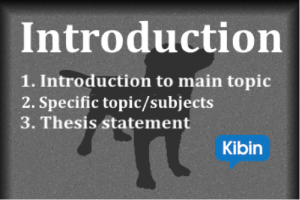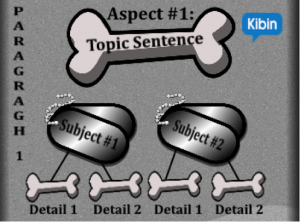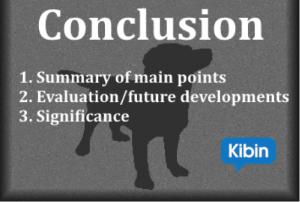It’s paralyzing. Moving forward seems impossible, and self-doubt creeps in. You feel like a lost puppy, unsure of what to do next.
When writer’s block strikes, it can be doggone demoralizing. But the good news is that an outline is your best friend for getting organized and ready to write.
In this post, I’ll show you how to develop a compare and contrast essay outline that lets you kick writer’s block to the curb and craft a structurally sound essay about anything.
Let’s start with making sure everyone’s on the same page about what makes up a compare and contrast essay. Ready?
What Is a Compare and Contrast Essay?
In the simplest terms, a compare and contrast essay takes two subjects (i.e., objects, events, people, or places)—closely related or vastly different—and focuses on what about them is the same or what’s different or focuses on a combination of similarities and differences.
It’s not, however, just a simple comparison – that’d be too easy, right?
It must serve a larger purpose by doing one of the following:
- State something unknown.
- Clear up a misunderstanding.
- Show that one thing is superior to another.
- Lead to a new way of doing/seeing/understanding something.
- Argue a point with supported facts.
There are several formats for writing a compare and contrast essay, but I’ll use point-by-point organization to make my outline.
Compare and Contrast Essay Outline: Point-by-Point Organization
The point-by-point comparison focuses on comparing and contrasting one aspect about both subjects at the same time.
It’s typically easier for readers to follow this structure. It provides a clear, easy-to-follow structure. To keep things simple, I’ll use a 5-paragraph essay structure to create a compare and contrast essay outline.

The outline consists of three parts:
- Introduction
- Body Paragraphs
- The first difference between subjects
- The second difference between subjects
- The third difference between subjects
- Conclusion
Now that you have the basic structure down, let’s break down the components using my two favorite four-legged beasts: Molly and Morgan.
Compare and Contrast Essay Outline: Introduction
 The introduction is where you introduce your topic both in broad and specific terms. It’s also where make your thesis statement. The thesis statement provides the main point of or ideas within your essay.
The introduction is where you introduce your topic both in broad and specific terms. It’s also where make your thesis statement. The thesis statement provides the main point of or ideas within your essay.
The introduction has three key elements. I’ll go through each separately.
1. Introduction to the main topic
To introduce your main topic, you ideally want to start with a hook sentence and then detail the specifics of the topic itself.
Comparing and contrasting Morgan and Molly, my opening lines to introduce the topic might read something like this:
“Do opposites really attract? The law of attraction says they do, but is this phenomenon limited to humans? It’s definitely not, nor is it limited to romantic relationships. Dogs with drastically different personalities and habits form close attachments all the time.”
2. Specific subjects to compare and contrast
Next you need to identify who or what you’re comparing and contrasting specifically under the main topic and theme.
The next lines in my introduction might look something like this:
“The dogs in my household, while similar in many ways simply because they’re dogs, are vastly different creatures. Molly is a 70-pound bully who likes to pounce, lick, and paw at canines and humans until she gets her way. Morgan, on the other hand, is a 50-pound sweetheart who is content with whatever is going on. Despite their differences, the two dogs are strongly attached to one another.”
3. Thesis statement
Finally, to wrap up your intro, you want to express the specific aspects you’re comparing and contrasting. This provides a clear idea of where your essay is going.
My thesis statement focuses on three specific habits/characteristics of my rambunctious dogs. It might be something like this:
“Most notably, Molly and Morgan differ in how they accessorize, what their favorite toys are, and how they deal with downtime, yet the two have a strong bond as ‘sisters’ who cuddle at every opportunity.”
Whew! The introduction is often the toughest part. It’s where you’ll lay out the structure of your essay. (For this reason, it’s usually a good idea to write the introduction last.) Since that’s done, we’ll move on to Part B, the body paragraphs.
Compare and Contrast Essay Outline: The Body Paragraphs
 Since I’m focusing on just three aspects about Molly and Morgan, I’ll have three body paragraphs. Under the point-by-point organization for a compare and contrast essay outline, you’ll need as many paragraphs as the number of aspects you’re comparing and contrasting.
Since I’m focusing on just three aspects about Molly and Morgan, I’ll have three body paragraphs. Under the point-by-point organization for a compare and contrast essay outline, you’ll need as many paragraphs as the number of aspects you’re comparing and contrasting.
Each paragraph will have a topic sentence focused on the aspect you’re comparing and contrasting. Each paragraph will also have two details about each subject as they relate to the aspect:
Body paragraph #1
The topic sentence states the main idea of the paragraph. The topic sentence of my first paragraph might look like this:
Aspect #1 – Topic sentence: “The first difference between Molly and Morgan is the way they accessorize; while both are budding fashionistas, each of the girls has her own personal style.”
If you can ignore their cuteness (yup, I’m biased, but you have to admit they’re pretty adorable, right?), we’ll dive into the two details for each dog. My detail sentences might look like this:
Subject #1: Molly
- Detail #1: “Molly takes the sporty approach and is perfectly content with her owner’s baseball cap firmly on her head.”
- Detail #2: “Her choice in headwear is indicative of the brute, in-your-face interactions with her sister and owners.”
Subject #2: Morgan
- Detail #1: “On the other hand, Morgan prefers the downhome, classic country look of a bandana.”
- Detail #2: “Her accessory preference speaks to her humble, attention-loving and passive demeanor.”
See how easy crafting a paragraph is when you break it down?
You could write paragraphs in your sleep now, right? No? Okay, let’s do the same thing for the second and third body paragraphs.
Body paragraph #2
Aspect #2 – Topic sentence: “Another difference between the girls is their favorite toys; even though they are both equally protective of their favorites, their choices contradict their personalities.”
Subject #1: Molly
- Detail #1: “Molly prefers to cuddle up with her favorite stuffed animal (which changes over time as she eats them).”
- Detail #2: “She often can be found protectively cuddling the stuffed animal in her sleep and making sure her owners give it plenty of love, too, by pushing the drool-covered plush in their faces at any opportunity.”
Subject #2: Morgan
- Detail #1: “Conversely, Morgan prefers the traditional rawhide bone.”
- Detail #2: “She will growl, snarl, and bare teeth to protect it from anyone (even her owners!).”
Two body paragraphs down – only one to go. If you’re struggling, just take a breather.
Take your time, and work through the outline one section at a time if you need to.
Rome wasn’t built in a day, and your compare and contrast essay outline doesn’t have to be either (unless you’re a procrastinator).
Body paragraph #3:
Now we’ll look at my third body paragraph. The final body paragraph wraps up the last aspect identified in the thesis. Mine might be constructed something like this:
Aspect #3 – Topic Sentence: “The final difference between the two pups is how they deal with downtime, more specifically, their ability to just chill while ignoring (or not ignoring) distractions.”
Subject #1: Molly
- Detail #1: “Molly isn’t content unless she’s getting attention, even if that attention is simply having a warm human body next to her; she’s frequently found flopping on the couch looking pensive and bored out of her pay-attention-to-me-now-or-I-will-lick-your face-endlessly mind.
- Detail #2: “While it’s sometimes possible to catch a photo-op with her sandwiched between pillows wearing a pleading look, breaking out the camera usually produces a face-licking attack before the shot is even focused.”
Subject #2: Morgan
- Detail #1: “Morgan, however, handles downtime differently. Perfectly content without constant attention, Morgan takes it as an opportunity to curl up and catch some ZZZs.”
- Detail #2: “A heavy sleeper who snores and runs in her sleep while dreaming of chasing squirrels, Morgan is happy sleeping for hours and is undisturbed by camera flashes and clicks.”
That’s it. The body paragraphs are complete. Not so bad, was it?
While I had three body paragraphs, your outline might have only two. Or it might have five. It depends on the number of points you’re comparing and contrasting.
Now we’re ready to wrap things up with the conclusion.
Compare and Contrast Essay Outline: Conclusion
Hot diggity dog! If you’ve made it this far, you’re in the home stretch—developing the conclusion of your compare and contrast essay outline.
The conclusion is the easiest part. You’ve already set the stage for it with your thesis statement and body paragraphs. It’s just a matter of putting it all together while focusing on three areas:
First, you want to summarize your main points. It’s more than a simple summary, though. You want to synthesize your thesis with the information in your body paragraphs.
I might summarize with a few sentences like this:
“In conclusion, these three aspects clearly show how Molly and Morgan go about their doggy lives in different ways. While Molly likes to accessorize with baseball caps, cuddle with stuffed animals, and sit around looking bored, Morgan prefers rawhide bones, relaxing solo, and sleeping contently whenever she can.”
2. Evaluation
Next, you want to evaluate what you’ve discussed or talk about possible future developments.
This is where you show the greater purpose of your topic. Your conclusion should answer one question: What does it all mean?
As you work on this part, keep in mind that your conclusion should bring things full circle to your introduction.
My compare and contrast essay outline requires just focusing on an evaluation.
My evaluation sentences might look something like this:
“In some ways, the differences parallel their personalities—Molly as a brute and Morgan as a sweetheart. The differences also show how both dogs sometimes stray from their normal behavior, notably through how they interact with their favorite toys. Taken collectively, however, their differences don’t stop the law of attraction from coming into play. Though they like a different look, like to play with different toys, and like to relax differently, they adore each other and cuddle up together at every opportunity.”
3. Significance
Finally, you need to show the significance of the differences. What was your end goal in showing the differences? (Hint: Refer back to your introduction and thesis statement if you’re stuck here.)
I might use one sentence to show the significance, tie everything back to the intro, and create finality all in one swoop by writing something like this:
“This shows that opposites really do attract—even among canines.”
Download Template for Your Own Compare and Contrast Outline
Have your own compare and contrast essay to write? Make the process easier, and banish writer’s block by downloading this compare and contrast essay outline in MS Word or PDF format to get started.
Compare and Contrast Essay Outline Template (.doc)
Compare and Contrast Essay Outline Template (PDF)
Whether you’re ready to write or still flushing out your topic, using an outline keeps you on-task. It keeps you on-topic to create a logical, easy-to-follow format.
Additional Help for Your Compare and Contrast Essay Outline
Still struggling? Try reading some completed read more about this type of essay.
Finally, don’t forget about editing and proofreading! Even the best writers make mistakes or have difficulty recognizing weak points in their own writing.
If you’re aiming to put your best paw—err draft—forward, have one of our talented Kibin editors edit your essay for grammar, logic, clarity, and flow.
Write on, and best of luck!






